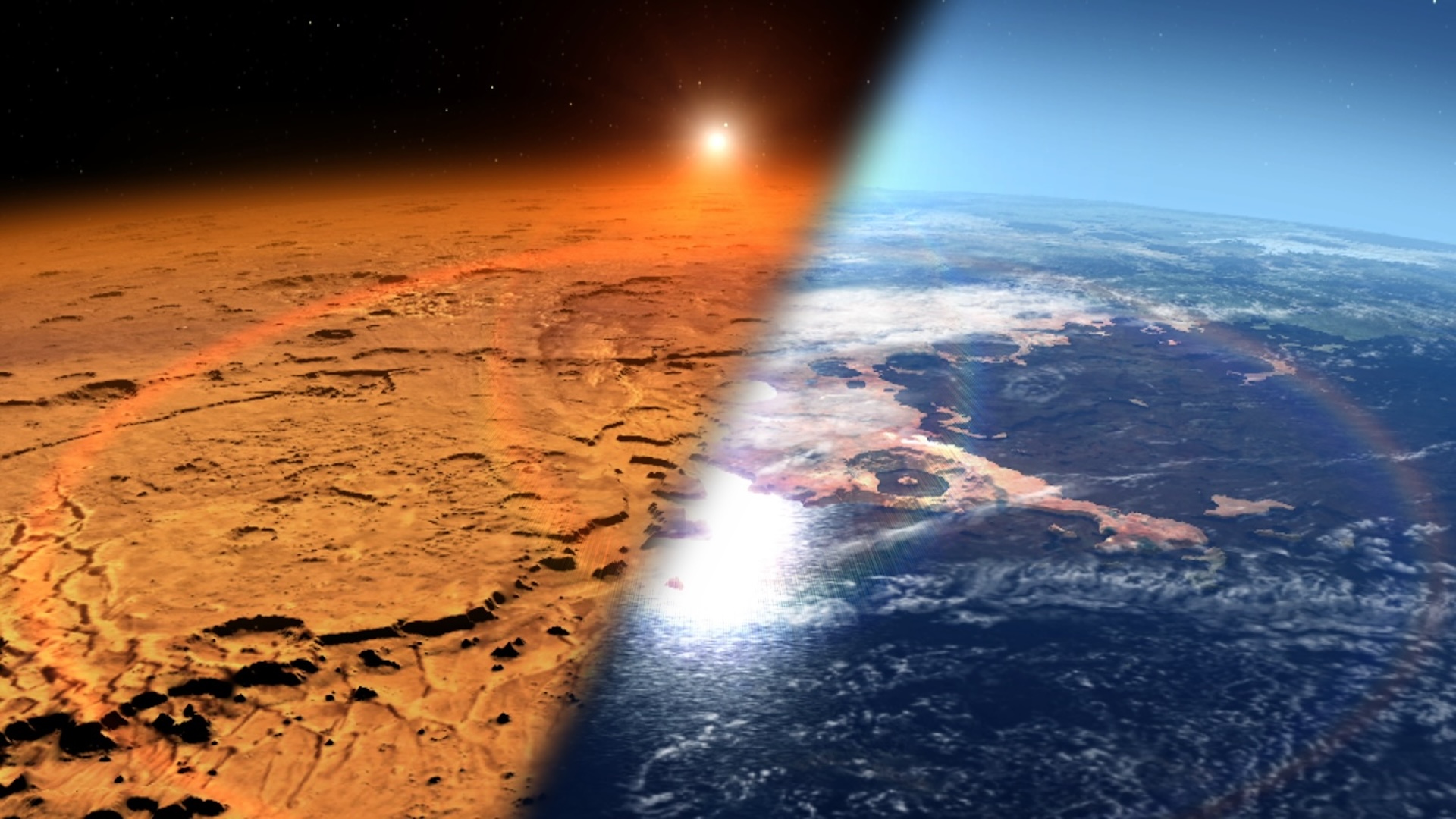NASA spacecraft finds solar 'cannonballs' may have stripped Mars of its water — proving decades-old theory
After nearly a decade in orbit, NASA's MAVEN spacecraft has, for the first time, directly observed the process that scientists had long suspected was responsible for stripping Mars of its atmosphere.

After nearly a decade in orbit, NASA's MAVEN spacecraft has, for the first time, directly observed the process that scientists had long suspected was responsible for stripping Mars of its atmosphere.
The findings, published May 28 in the journal Science Advances, could help answer a longstanding question about how Mars transformed from a potentially habitable world with rivers and lakes into the mostly-frozen desert we see today.
Although Mars today is dry, cold and virtually airless, its surface is carved with unmistakable evidence of a wetter past. Features resembling ancient river valleys, lake beds, and minerals that only form in the presence of water point to long-lived lakes, possibly even shallow seas, that flowed on Mars' surface billions of years ago. For liquid water to persist, however, Mars would have needed a much denser atmosphere to trap heat and sustain higher surface pressure. Understanding when and how that atmosphere vanished is essential to reconstructing Mars' climate evolution, and to determining how long the planet may have remained habitable.
Over the past decade, scientists have gathered mounting evidence that solar wind — the constant stream of ionized particles emitted from the sun — and radiation stripped away much of the Martian atmosphere. Among the most significant mechanisms behind this erosion is a process called sputtering, where high-energy particles from solar wind collide with the planet's upper atmosphere. These collisions, in principle, transfer enough energy to neutral atoms and help break them free from the planet's gravitational pull, flinging them into space.
"It's like doing a cannonball in a pool," Shannon Curry, the principal investigator of the MAVEN mission at the University of Colorado Boulder who led the new study, said in a statement. "The cannonball, in this case, is the heavy ions crashing into the atmosphere really fast and splashing neutral atoms and molecules out."
While sputtering had long been suspected as a key player in Mars' climate evolution, this is the first time the process has been observed directly. Using nine years of data from the MAVEN spacecraft, Curry and her colleagues captured present-day sputtering on Mars.
Related: NASA rover discovers out-of-place 'Skull' on Mars, and scientists are baffled
Get the world’s most fascinating discoveries delivered straight to your inbox.
By combining data from three of MAVEN's instruments, the researchers created a detailed map of argon, a noble gas, in Mars' upper atmosphere. Argon is an ideal tracer for this kind of atmospheric escape because it is chemically inert, heavy, and resistant to becoming charged. This makes it unlikely to interact with other atmospheric processes, meaning any significant loss of argon serves as a clear tracer of sputtering.
Indeed, MAVEN detected the highest concentrations of argon at altitudes where solar wind particles collide with the Martian atmosphere, the new study reports. Its presence was much higher than where scientists would expect it to naturally waft under the planet's gravity, so the findings provide direct evidence that sputtering is actively lifting and removing the molecules from Mars, according to the new study.
This process may even have been the driving force behind the loss of Mars' once-thick atmosphere and, with it, its ability to host liquid water on the surface, the study notes.
MAVEN's data also revealed that this process occurs at a rate four times higher than previously predicted by models, according to the new study. It became more pronounced during solar storms, potentially offering a glimpse into how much more intense the process might have been during Mars' early history when the planet was more vulnerable to the sun's energy.
Scientists suspect this process was especially intense billions of years ago, when the sun was more active and Mars had already lost its protective magnetic field. Without that magnetic shield, the Martian atmosphere was left vulnerable to the full force of the solar wind, accelerating its erosion and pushing the planet past a tipping point where liquid water could no longer persist.
"These results establish sputtering's role in the loss of Mars' atmosphere and in determining the history of water on Mars," Curry said in the statement.
To fully determine whether sputtering was indeed the primary driver of Mars' long-term climate change, scientists will need to peer billions of years into the past using models, isotopic data, and ancient climate clues. Only then can they judge whether sputtering merely grazed the edges of Mars' atmosphere — or stripped it bare.

Sharmila Kuthunur is an independent space journalist based in Bengaluru, India. Her work has also appeared in Scientific American, Science, Astronomy and Space.com, among other publications. She holds a master's degree in journalism from Northeastern University in Boston. Follow her on BlueSky @skuthunur.bsky.social
You must confirm your public display name before commenting
Please logout and then login again, you will then be prompted to enter your display name.
